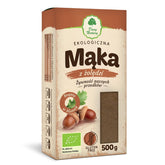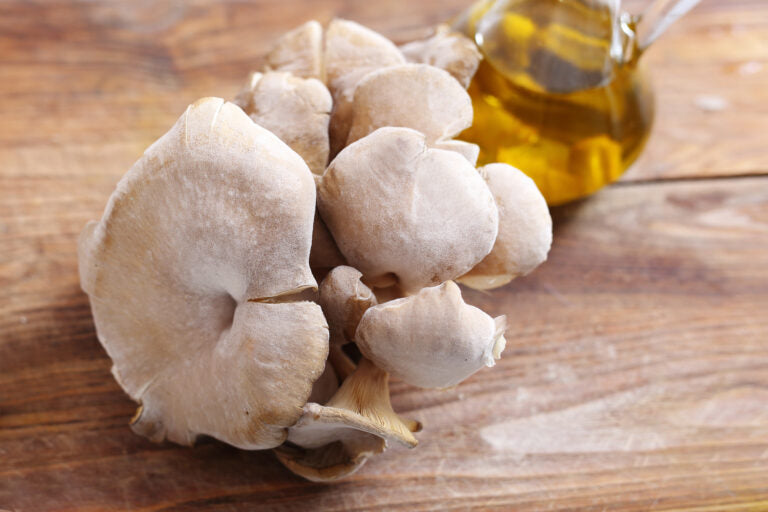Oyster mushrooms – are they worth eating? Oyster mushroom dish ideas
Contents:
- Oyster mushrooms – health-promoting properties
- Are there any contraindications to eating oyster mushrooms?
- The use of oyster mushrooms in the kitchen – ideas for dishes with oyster mushrooms
It's well known that mushrooms, aside from their flavor, which is appreciated in cuisines around the world, lack significant nutritional value. However, there are some exceptions, including oyster mushrooms. These distinctive mushrooms, which grow asymmetrically laterally on the trunks of deciduous trees, are a source of vitamins, minerals, and protein, among other nutrients, and are considered among the most valuable. It's worth knowing what properties these mushrooms have, how to prepare them, and whether everyone can eat them.
Oyster mushrooms – health-promoting properties
Oyster mushrooms are low-fat and cholesterol-free mushrooms. They are low in calories, with very little fat and sugar, and zero cholesterol. They have a fairly high fiber content. They are also recognized as a food product with a very low glycemic index. They contain a wealth of nutritional value, including:
- easily digestible (up to 70%) protein,
- a range of B vitamins (including riboflavin, pantothenic acid, folic acid, vitamin B6 and thiamine),
- Vitamin D,
- Vitamin C (100 g cover 15% of the daily requirement),
- Minerals: Iron, Calcium, Magnesium, Potassium, Phosphorus, Selenium, Zinc, Sodium,
- Antioxidants.
Regular consumption of oyster mushrooms helps lower cholesterol levels. They have a positive effect on the condition of blood vessels and can be consumed by people with atherosclerosis and diabetics, as they do not raise blood sugar levels. They also contain an antioxidant called ergothioneine, which protects cells from damage and aging. Interestingly, oyster mushrooms retain this ingredient even after heat treatment.
Are there any contraindications to eating oyster mushrooms?
In people who are allergic to mushrooms, oyster mushrooms can cause an allergic reaction: rash, fever, joint pain, or symptoms of oral allergy syndrome. Because mushrooms contain a significant amount of purines, which are metabolized in the body to uric acid, oyster mushrooms should not be consumed by people with gout.
The use of oyster mushrooms in the kitchen – ideas for dishes with oyster mushrooms
Oyster mushrooms are large mushrooms whose shape is compared to oyster shells. These aromatic mushrooms are popular in Japanese, Chinese, and Korean cuisine, as well as in Poland. Like other mushrooms, they have a wide range of culinary uses, including in soups, sauces, and stews, and in the preparation of "vegetarian tripe," as an addition to porridge, stews, salads, scrambled eggs, pancakes, or dumplings. Simply frying them in a pan with a little oil and seasoning makes a delicious, filling dish.• Pan-fried oyster mushrooms
Before each use, oyster mushrooms should be thoroughly rinsed under running water, sliced, and placed in a pan over medium heat with a little oil and butter. Fry the mushrooms for about 10 minutes, stirring occasionally, until the moisture has evaporated and the mushrooms turn brown. Finally, season the oyster mushrooms with salt and pepper , and the dish is ready.
• Oyster mushroom cutlets
To prepare oyster mushroom cutlets, clean 250 g of the mushrooms, rinse them under running water, and dry thoroughly, then salt and lightly pepper them. Crack two eggs into a deep plate, add 50 g of wheat flour to the second plate, and 50 g of breadcrumbs to the third. Coat the oyster mushrooms first in flour, then in egg, and finally in breadcrumbs. Fry in hot oil until golden brown. Serve the finished "cutlets" with dill-dried potatoes and your favorite salad.
• Penne with oyster mushrooms, sun-dried tomatoes and Parmesan cheese
First, peel and finely chop 2 large onions. Place the chopped onion in a pan with heated clarified butter until lightly glazed. Then chop about 300g of oyster mushrooms into strips, add 200g of sun-dried tomatoes, and a bunch of dill, and grate about 100g of Parmesan cheese . Add the oyster mushrooms to the pan with the onion and fry for 4-5 minutes, then add the chopped sun-dried tomatoes and dill. Season with salt and pepper and drizzle with a little olive oil. Optionally, chopped chili pepper can be added. Cook the penne pasta according to the recipe on the package and, once drained, add it to the oyster mushrooms with tomatoes. Serve the pasta in deep plates and sprinkle with Parmesan cheese.
• Salad with oyster mushrooms
Wash and dry 400g of oyster mushrooms, cut them into strips, and fry them in clarified butter . While the mushrooms are frying in the pan, boil 4 hard-boiled eggs. On a large plate, place about 100g of arugula, 10 halved cherry tomatoes, and 200g of canned chickpeas. Place the peeled and quartered eggs on the salad and add the fried oyster mushrooms. In a separate bowl, mix about seven tablespoons of olive oil with salt and pepper, chopped parsley, a tablespoon of apple cider vinegar, olive oil , and harissa paste. If you like spicy dishes, you can simply add a spoonful of harissa, a spicy chili-based paste, to the dressing. Pour the prepared dressing over the salad.
THE PUBLISHER'S CHOICE
Dried plums 1 kg BIOGO
- £6.08
- £6.08
- Unit price
- / per
Dried White Mulberries 500 g ORGANIC
- £5.06
- £5.06
- Unit price
- / per
Almonds 1 kg BIOGO
- £10.14
- £10.14
- Unit price
- / per
Cranberries sweetened with apple juice organic 1 kg BIOGO
- £14.20
- £14.20
- Unit price
- / per
Dried dates 1 kg BIOGO
- £3.65
- £3.65
- Unit price
- / per
Unpeeled buckwheat groats 1 kg BIOGO
- £2.44
- £2.44
- Unit price
- / per
Walnuts 800 g BIOGO
- £7.50
- £7.50
- Unit price
- / per
Peeled sunflower seeds 1 kg BIOGO
- £2.64
- £2.64
- Unit price
- / per
PULLED ORGANIC SUNFLOWER SEEDS 1 KG BIOGO
- £3.85
- £3.85
- Unit price
- / per












































































































































